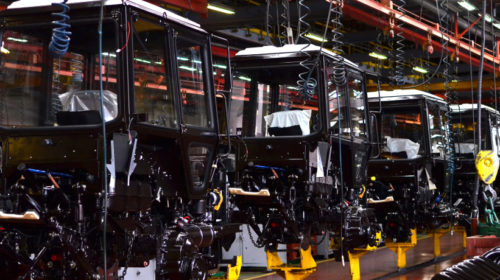
What is Just-in-Time (JIT) Manufacturing?
Interested in just-in-time (JIT) manufacturing? Learn everything you need to know about it here, including its origin, application and (dis)advantages.

What is Just-in-Time (JIT) Manufacturing?
Just-in-time manufacturing is a method of production that aims to align the inflow of raw materials with the demand for finished end-products. The purpose of JIT manufacturing is to minimize storage costs and eliminate different kinds of waste. The JIT system relies on a continuous flow of production, top-notch factory employees, few machine breakdowns and a reliable supply chain.
In this article, you’ll learn everything you need to know about JIT manufacturing.
JIT manufacturing is a double-sided coin; it has advantages as well as disadvantages. The COVID-19 pandemic, which massively disrupted supply chains, has brought some of these disadvantages to light. Instead of digging into that subject immediately, we’ll start with the beginnings: the origin of just-in-time manufacturing.
Who invented just-in-time manufacturing?
The origin of JIT manufacturing
People generally agree that the roots of the JIT concept lie with Taiichi Ohno’s post-World War II approach to manufacturing. Ohno worked for Toyota in a time when Japan suffered from a shortage of capital, storage space and natural resources, which made it hard to develop any kind of large-scale industry. Ohno dealt with these circumstances in a clever and creative way by designing a highly organized and efficient low-cost production process that could nevertheless produce qualitative products.
Synonymous concepts and terms
Ohno’s methodology later became known as the Toyota Production System (TPS), which was first branded as just-in-time and subsequently as lean manufacturing in North America. Other names are used in different places: Motorola uses ‘short-cycle manufacturing’ as a term; IBM uses ‘continuous-flow manufacturing.’
Tomayto, tomahto.
Different names are used in different places, but the same core idea is expressed: a pull production system aimed at reducing waste, storage cost and valueless activity, and improving quality, productivity and production processes. With the ultimate aim, naturally, of maximizing profit.
How does just-in-time manufacturing work?
In contrast to traditional push manufacturing systems that produce large quantities of products without taking the exact demand into account, JIT manufacturing only produces the number of products a customer has ordered. Through this approach, the 8 wastes of lean manufacturing – called ‘Muda’ in Japanese – are reduced. These are related to the following areas:
- Transport costs
- Inventory costs
- Motion
- Waiting time
- Overproduction
- Overprocessing
- Defects
What kind of companies use just-in-time manufacturing?
The JIT concept is used by companies of all sizes, from small family restaurants to huge multinational manufacturers. JIT production is so popular because it increases profit and allows people to operate a business with a limited amount of capital.
As we’ve already talked about manufacturing, let’s take a JIT example from the food business instead. Instead of ordering a large number of ingredients every week and freezing them for preservation, a restaurant with a JIT approach will order a reduced amount of food every day. In this way, less storage space is needed, less food is wasted and the freshness of the dishes (quality) increases.

Pros and Cons of JIT manufacturing system
Pros
- Reduced storage costs
- Less waste
- No overproduction
- Resource-efficient (both in material, people and capital)
- Better cash flow
- Shortened throughput time
Cons
- Relies heavily on a well-functioning supply chain; major supply chain disruptions can have disastrous consequences
- Takes a sustained, company-wide effort to bring about and maintain
- Requires a well-designed, well-structured production process
- All employees need to be skilled and dedicated
- Unprepared for sudden market demand
JIT versus JIC manufacturing
JIC (just-in-case) is a similar, but not identical, concept to JIT. The difference between these methods lies in their approach to inventory management. Where JIT only stores materials that are needed to meet an order, JIC keeps an inventory of raw materials and completed end-products to be prepared for supply chain disruptions or sudden spikes in demand.
Both methods have their upsides and downsides. As already noted previously in this article, JIT is a great cost-reducing technique. That, however, goes hand in hand with risks. JIT is reliant on a supply chain functioning smoothly and continuously. It’s also difficult to react to sudden market demand when you have a limited inventory of materials. The COVID-19 pandemic showed this neatly when many manufacturers were wholly unprepared for the sudden increase in demand for products like facemasks and hand sanitizer.
Manufacturing with a JIC system is more costly, as an inventory of goods has to be kept and maintained. The benefits of this system are, however, apparent: a factory is more prepared for unexpected events and can meet sudden demand instantaneously. The best practice is, probably, to take the best of both worlds and find a balance between the two systems. Wasteful practices should obviously be eliminated, but a plant should also at least be somewhat prepared for unforeseen circumstances.
Curious about the manufacturing trends that are shaping the future?

Related Articles

Knowledge Management on the factory floor

Work on tasks from an easy-to-use Task Management system

